Dark-colored stones, such as black obsidian and blue calcite, are sun-safe. Orange stones like carnelian and tiger’s eye can become more vibrant when exposed to sunlight. Translucent crystals should be handled with care in the sun to prevent fading or cracking.
Ever wondered if that beautiful quartz sitting on your windowsill might lose its luster from the sun’s rays? Or if the obsidian necklace you wear daily could sustain damage from the ever-present sunlight? It’s a well-known fact that sunlight can energize and cleanse your crystals, but it’s equally important to understand that not all of them can withstand the strong rays of our closest star. In this guide, you’ll learn about the types of sun safe crystals that can be safely exposed to sunlight, how to charge them, and how to care for the sun-sensitive ones.
Sun Safe Crystals: A Comprehensive List
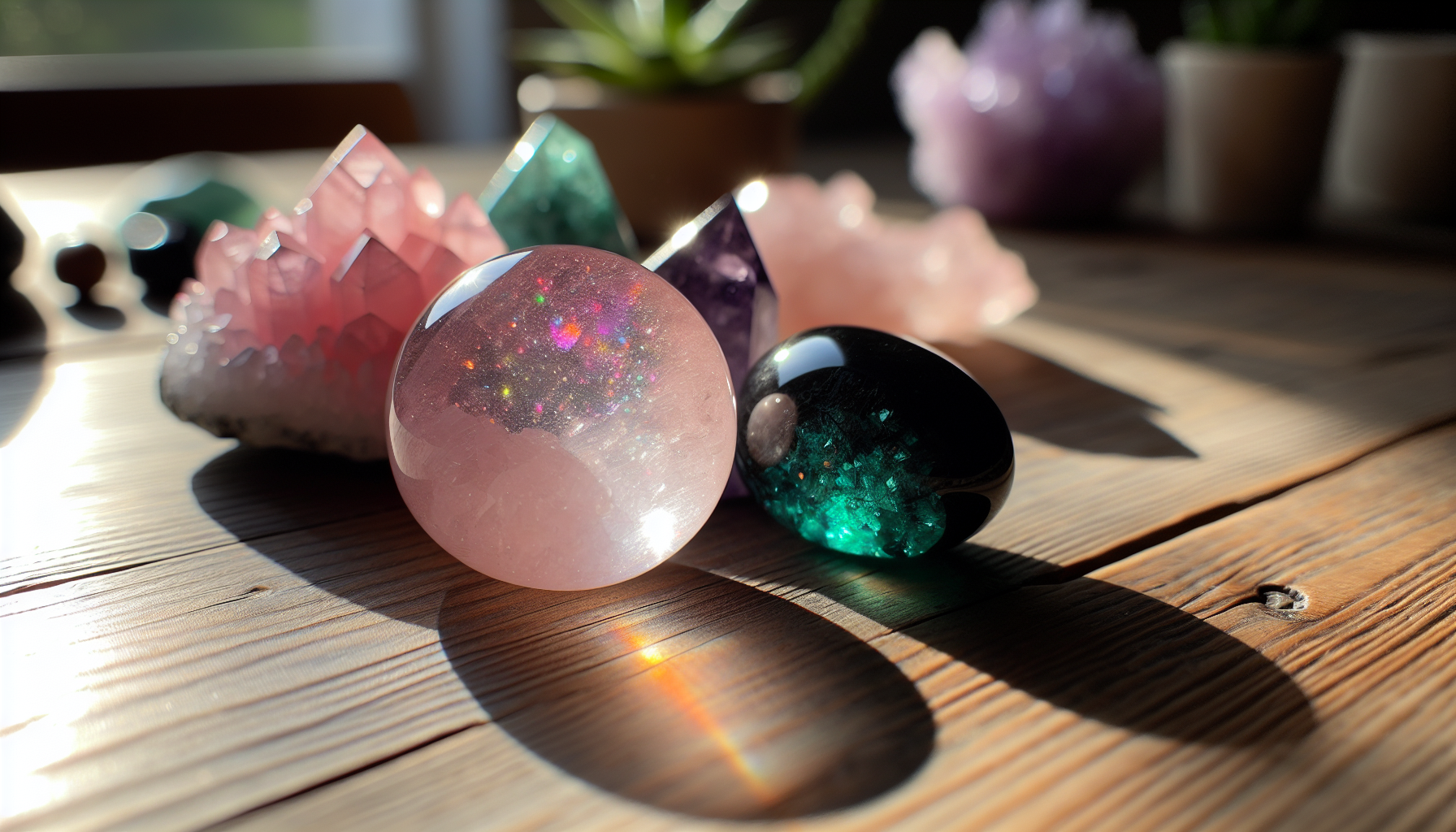
Sun exposure affects different crystals in varying ways. Here are some examples:
- Dark obsidian thrives in sunlight without suffering damage.
- Vibrant yellow topaz may fade under excessive sun.
- Translucent stones, such as rose quartz, demand a more cautious approach.
For both seasoned crystal collectors and beginners, knowing which crystals are sun safe is fundamental in preserving their aesthetic appeal and healing properties.
Dark Colored Stones
Dark-colored stones like black obsidian and blue calcite are akin to the night sky – absorbing light without losing their luster. The reason for their resilience lies in their composition. These stones contain transition metals that absorb certain wavelengths of visible light, granting them their dark color and the ability to retain heat from sunlight. This unique characteristic makes them more sun safe compared to other stones.
Frequently used dark-colored healing crystals including Black Tourmaline, Smoky Quartz, and Black Onyx can be safely charged in the sun. Their capacity to absorb sunlight without any damage or fade makes them an excellent choice for those who wish to incorporate the sun’s energy in their spiritual practices.
Orange Stones
Imagine a beautiful carnelian stone, its orange hue reminiscent of a warm sunset. These stones, connected to the solar plexus chakra, are generally considered sun safe. Their color can even be enhanced when bathed in sunlight, much like how a sunset intensifies as the sun dips below the horizon. In contrast, a tiger’s eye stone, with its unique golden-brown bands, also carries a strong connection to the sun’s energy.
Carnelian, a distinct variety of sun-protective orange gemstone, is a great example. The sun can stimulate chemical reactions in the minerals present in the stone, making carnelian crystals darker and redder due to the oxidation of the iron oxide. However, sun exposure might not affect all orange stones, so individual research is always advisable.
Translucent Stones
Translucent stones, akin to a window, allow light to pass through them, creating a beautiful interplay of light and color. These stones, including members of the quartz family like Clear Quartz, Green Aventurine, and Rose Quartz, can be charged in the sun, but caution is advised. Too much sunlight can result in crystal breaks or cracking, and prolonged exposure can cause their color to fade.
To safeguard your translucent crystals and extend their lifespan, follow these tips:
- Restrict their exposure to direct sunlight to a maximum of 5 minutes and keep them shaded.
- Bear in mind that each crystal is unique and necessitates a varying degree of care.
- If unsure, it’s better to be cautious.
How to Charge Crystals Safely in the Sun?
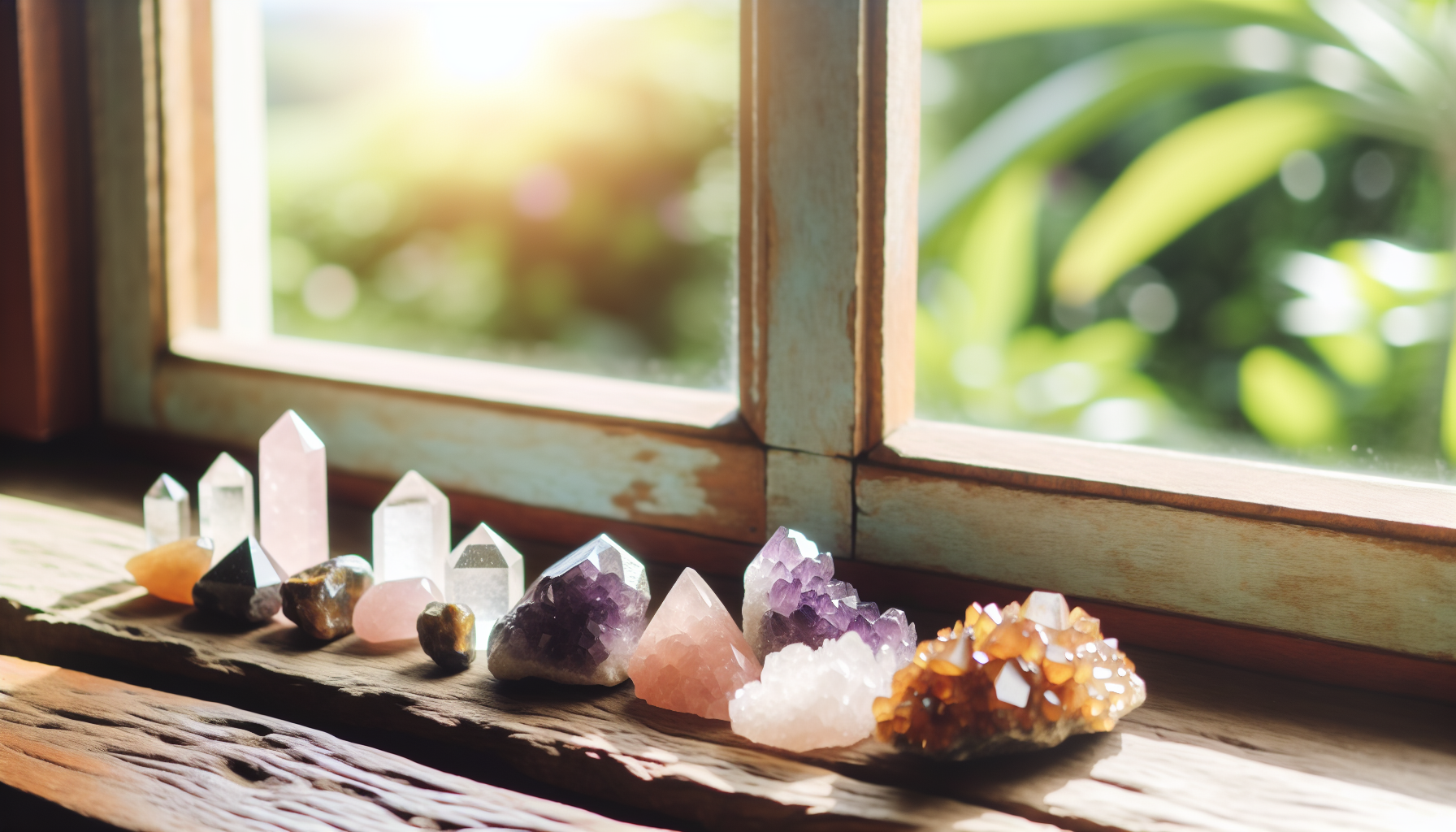
Charging crystals in the sun provides them with a much-needed energy surge. However, similar to coffee, excess can lead to harm rather than benefit. How can we then energize our crystals with sunlight without causing harm? The solution is to:
- Comprehend each crystal’s properties
- Use indirect sunlight
- Respect time restrictions
- Choose appropriate outdoor and indoor charging methods.
Indirect Sunlight
Indirect sunlight is like a soft touch on the skin on a hot summer day. It’s a gentler, less intense form of sunlight that’s diffused by passing through a medium like clouds or trees. Charging your crystals in indirect sunlight allows them to soak up the sun’s energy without the risk of damage or causing them to fade in the sun.
Place your crystals in a spot with indirect sunlight, such as a shady windowsill or a sun-filled garden. This way, they can bask in the sun’s energy without the risk of overheating. Certain types of crystals, such as orange crystals and very dark stones, are particularly well-suited to this method of charging.
Time Limitations
Just as too much sun can burn our skin, prolonged sun exposure can also harm our crystals. Different types of crystals require varying durations of sun charging due to their unique energy profiles. While some crystals, like Selenite, are self-cleansing and may not require additional sun charging, others may benefit from longer durations of sun exposure.
However, the intensity of sunlight can impact this time limit. For instance, prolonged exposure to direct sunlight can cause crystals to fade. Thus, monitoring your crystals when they are absorbing the sun’s energy is important, removing them once they have been sufficiently charged.
Outdoor vs Indoor Charging
When it comes to charging your crystals, location matters. Outdoor charging allows your crystals to absorb the sun’s energy more quickly, bringing a sense of vitality and potency to them. However, if outdoor charging isn’t feasible, fear not! Indoor charging can be just as effective.
Indoors, your crystals can still receive some indirect sunlight, albeit the charging process may be slower. You can place your crystals on a windowsill that faces a sun-filled garden or in a location where they can receive indirect sunlight. Remember to keep safety measures in mind when charging outdoors, such as selecting a secure area and shielding from direct sunlight.
What are the Effects of Sun Exposure on Crystals?
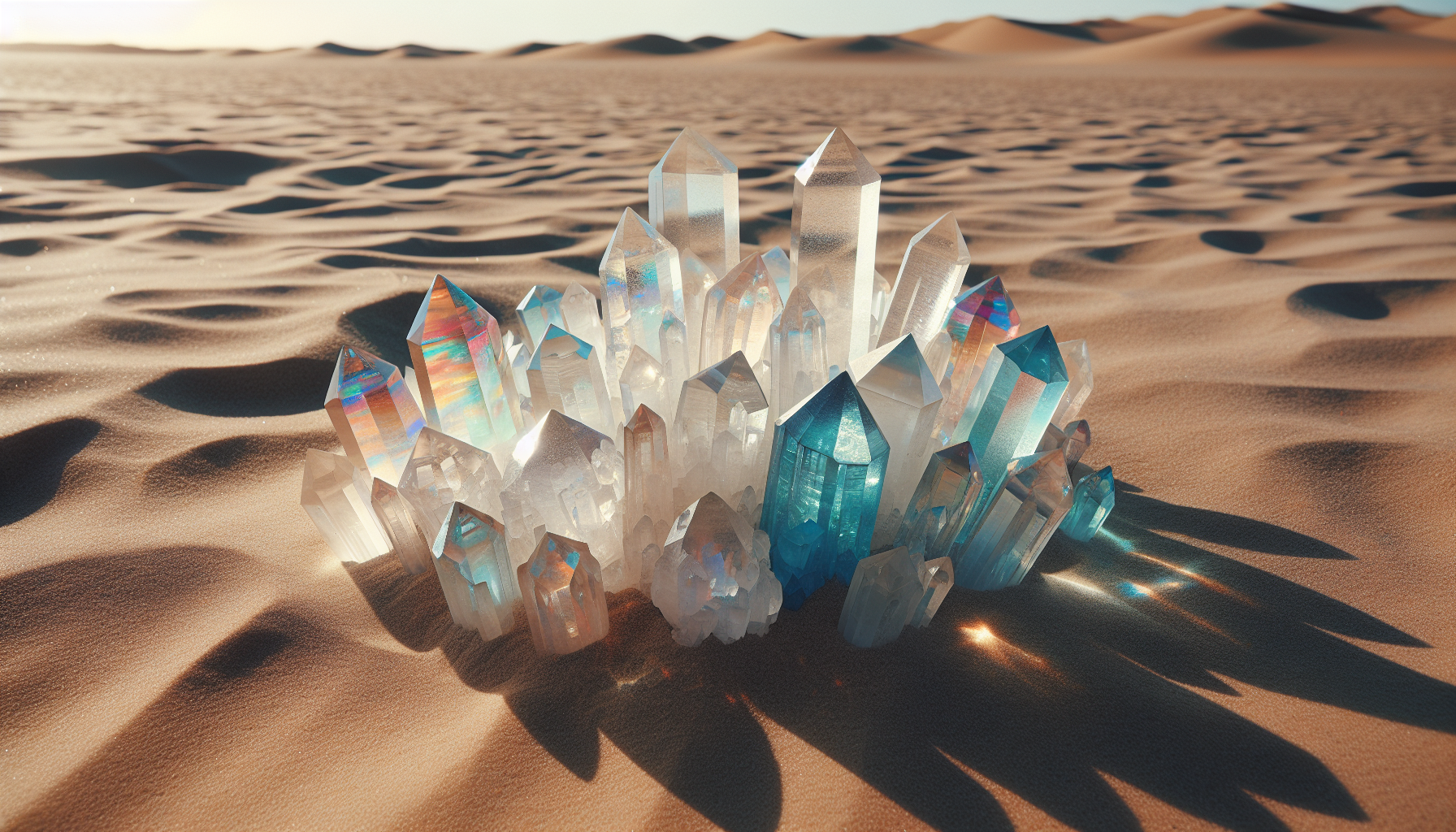
The sun’s rays can have a profound effect on your crystals, much like how it can turn a green leaf to a crisp brown. Prolonged sun exposure can cause crystals to fade in color and undergo structural changes. Some crystals, such as Amethyst and Citrine, can lose their color, affecting their energetic properties and reducing their healing abilities.
Contrarily, certain crystals such as Clear Quartz and Selenite might benefit from sun exposure as it can help purify and recharge their energy. Yet, even these crystals should not be exposed to direct sunlight for over two hours, as it could lead to crystal fractures or cracking.
Moonlight vs Sunlight: Comparing Crystal Charging Methods
Though both originate from celestial bodies, sunlight and moon light offer distinct energies to your crystals. Sunlight, akin to an espresso shot, invigorates your crystals with the sun’s energy. Moon light, in contrast, resembles a calming chamomile tea, gently purifying your crystals with its soothing energy.
Some crystals, such as Black Tourmaline, Clear Quartz, and Rose Quartz, are most effectively charged when exposed to moonlight. Others, like Lapis Lazuli, Malachite, and Moonstone, are more suited to be charged under sunlight. Understanding these differences helps you choose the right charging method for each crystal in your collection.
Popular Healing Crystals and Their Sun Safety
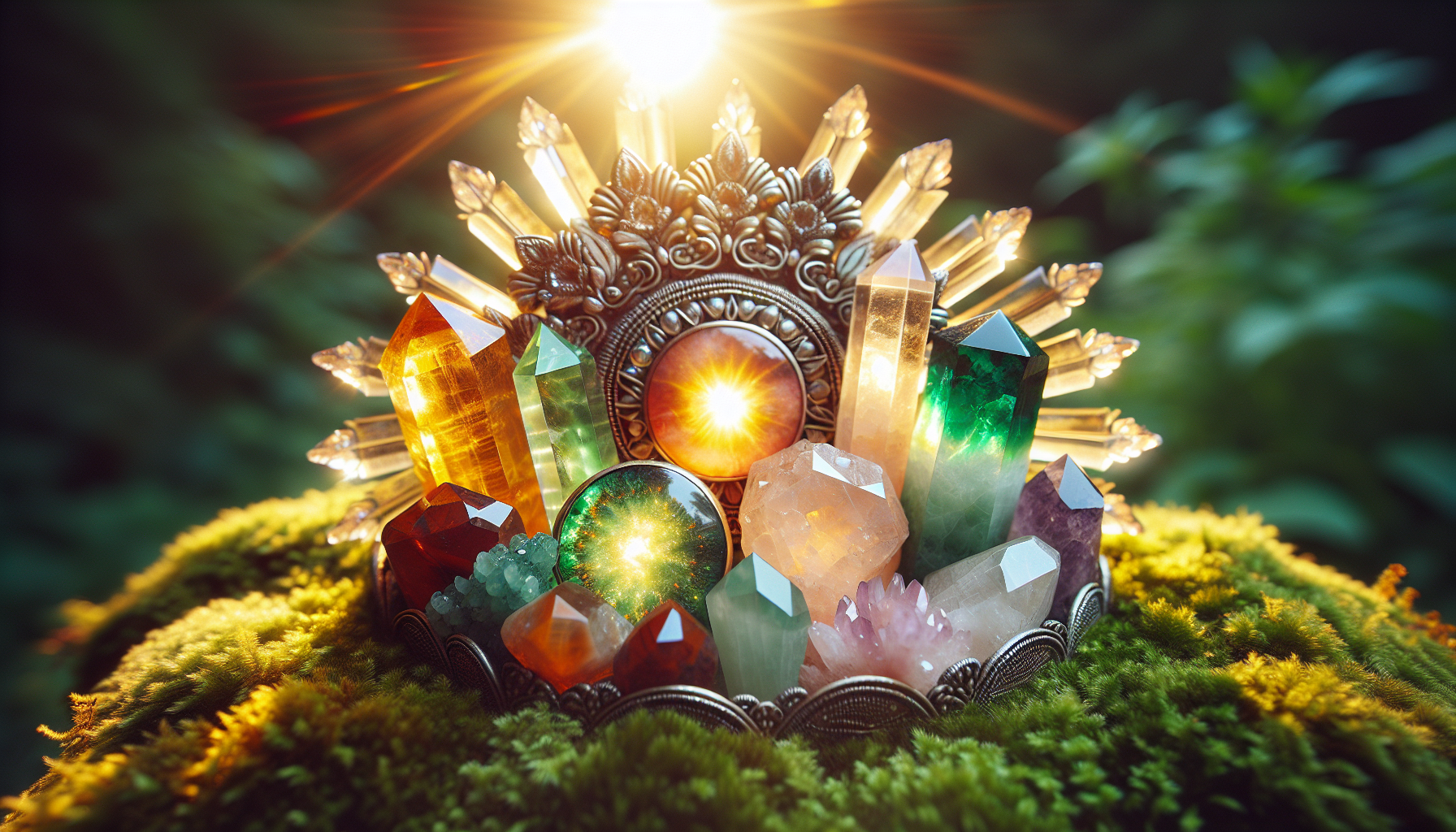
Among the myriad of crystals available, there are a few that stand out for their healing properties and their safety under the sun. Some examples include:
- Black Tourmaline
- Obsidian
- Carnelian
- Sunstone
These stones can be charged in the sun without worry. In fact, the sun even enhances the color of orange stones like Carnelian and Sunstone.
However, semi-transparent stones like Amethyst and Rose Quartz should be kept away from direct sunlight as prolonged exposure can cause them to lose their color and quality. Being aware of the sun safety level of these popular crystals can aid in optimizing their healing properties, while maintaining their aesthetic appeal.
How to Care for Sun Sensitive Crystals?
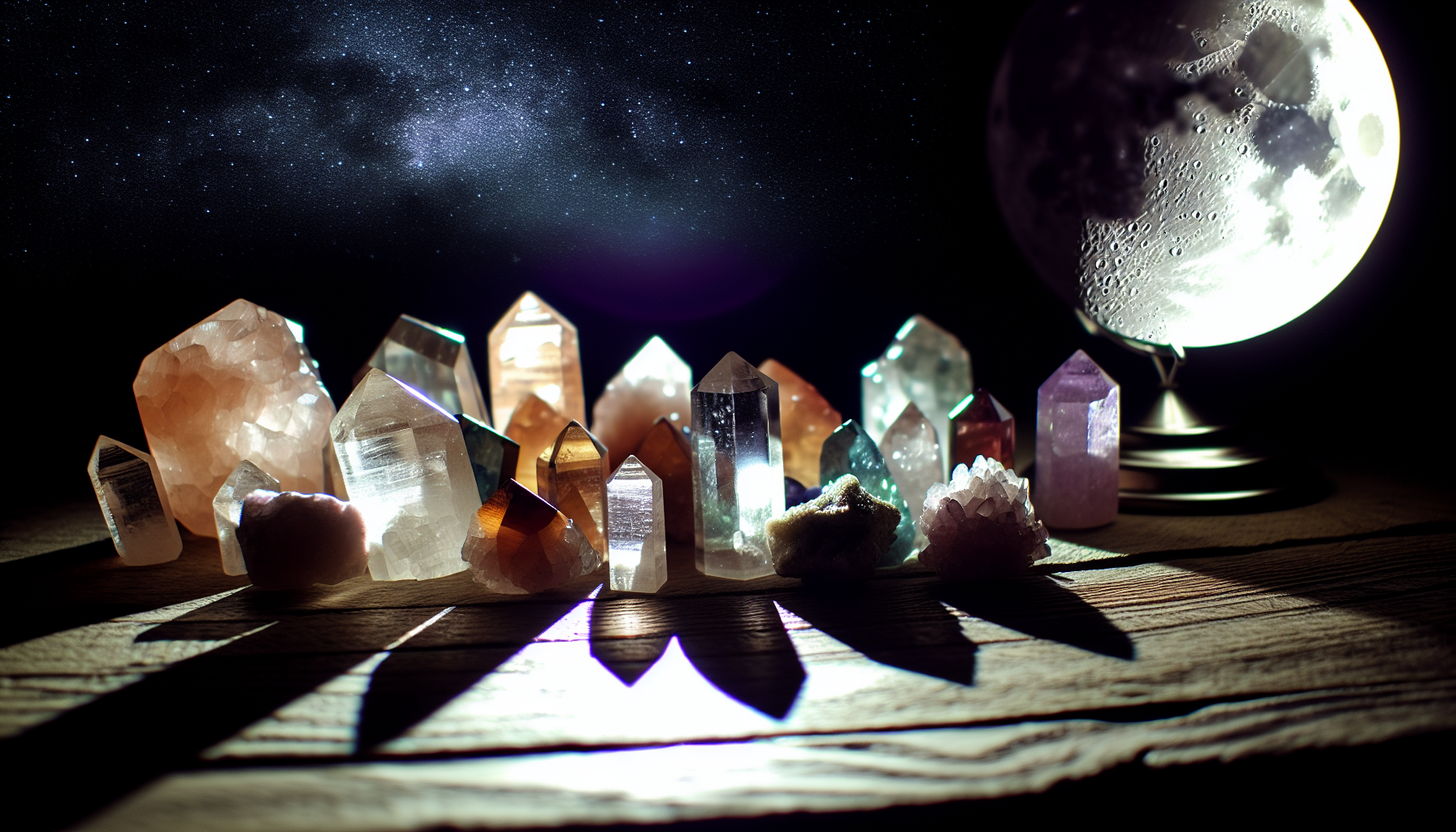
Sun sensitive crystals are like a delicate lace, requiring extra care and attention. While they may not bask in the sun’s energy like their sun-safe counterparts, they can still be cleansed and charged through alternative methods, free from negative energy. Full moonlight, for instance, is a gentle but effective way to energize these crystals.
Besides using alternative charging methods, sun sensitive crystals should be properly stored to ensure their longevity. Keeping them away from direct sunlight and adhering to specific care instructions for each crystal can help maintain their original hue and quality.
How to Maximize the Power of Sun Safe Crystals?
Sun safe crystals, similar to solar panels, absorb the sun’s energy and utilize it to amplify their natural properties. However, to fully utilize their power, appropriate charging techniques and setting intentions are key. Placing them in direct sunlight for a few hours can energize and cleanse the crystals, boosting their healing properties.
Aligning your crystals’ energy with your desired outcome by setting an intention is similar to programming a GPS – giving the crystals a clear destination and enabling them to work more efficiently towards that goal. Bear in mind that each crystal is distinctive, so always consult the specific properties of your crystals and follow the care instructions recommended.
How to Prevent Sun Damage to Your Crystal Collection?
Avoiding sun damage to your crystal collection is akin to using sunscreen – it demands knowledge of each crystal’s sun safety level and the implementation of necessary precautions. Ultraviolet (UV) radiation, also known as uv light, is a major factor contributing to sun damage and can provoke physical and chemical changes in the crystals, leading to damage.
Storing your crystals in a sealed container or glass vials filled with water can protect them from sun damage. If you’re unsure about a particular crystal, it’s best to research its sun safety level or consult with a crystal expert. And when it comes to charging sun-sensitive crystals, alternative methods like moonlight or burying them in the ground can be used.
Summary
Understanding the relationship between crystals and sunlight is crucial for anyone interested in harnessing their healing properties. Whether it’s the dark-colored stones soaking up the sun’s energy or the translucent ones requiring a more cautious approach, knowing how to charge and care for each type of crystal can enhance their power and longevity. Remember, each crystal is unique, and what works best for one might not work for another. So, keep exploring, learning, and growing with your crystal collection.
Frequently Asked Questions About Sun Safe Crystals
What crystals can you keep in the sun?
Certain crystals such as Black Onyx, Carnelian, Howlite and Moonstone can be safely kept in the sun for charging without fading.
Can I leave my crystals in the sun?
It is generally accepted that it is safe to leave crystals in the sun for a short amount of time, as the sun can help to cleanse and charge your crystals. However, some crystals should not be left in the sun for extended periods of time, as this can cause them to crack or break due to the heat. Therefore, check what type of crystals you have before leaving them in the sun and only leave them out for 30 minutes or less.
Can moonstone be in the sun?
Moonstone can be charged in the sun, though it is more appropriately charged in moonlight, as it reflects mostly sunlight from the parts of the Moon’s surface where the Sun’s light strikes. Charging it in the sun will infuse the stone with a balanced masculine-feminine energy.
What happens if a crystal is exposed to too much sun?
Prolonged sun exposure can cause crystals to fade in color and undergo structural changes, potentially leading to cracking or breaking.
Can I charge my crystals indoors?
Yes, you can charge your crystals indoors. Placing them on a windowsill that faces a sun-filled garden or in an area where they can receive indirect sunlight is the most effective way to do so.